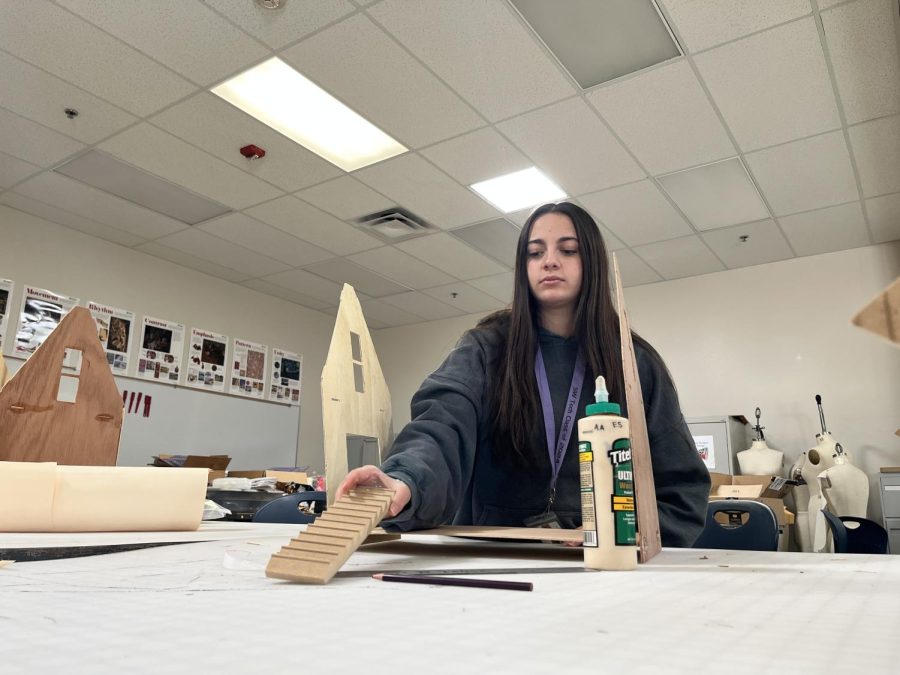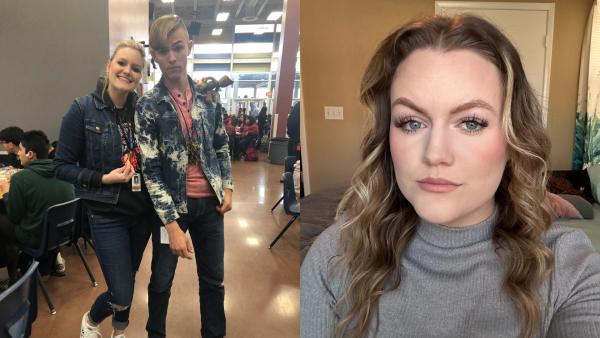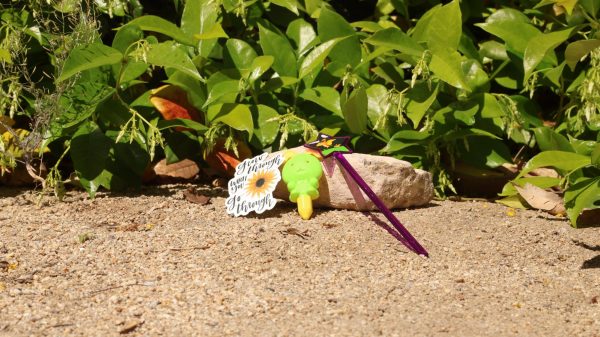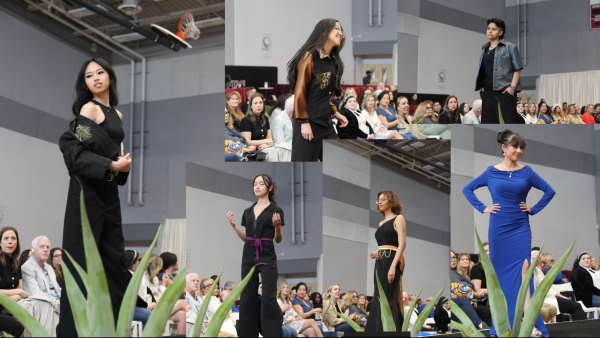Interior III Students Begin Capstone Projects
Juniors build and design doll houses
Constructing the foundation of her doll house, junior Samara Hendry sets the base of her project. Students began their capstones by following instructions and gluing pieces together. “It’s fun, it’s like building a gingerbread house,” Hendry said. “But instead of frosting, it’s wood glue, and that’s the worst part. After class, I find wood glue everywhere: my hair, nails, clothes. Plus, it smells pretty bad.”
March 24, 2023
Entering the fourth quarter, juniors in Interior Design III are using the information learned over the duration of the program to construct scale model homes and designed interior spaces.
“Each student has the freedom to design a space, make choices, and reinforce or change those decisions in a way that allows them to take design risks and push their creativity,” Interior Design teacher Levi Harbeson said. “Through this project, students will be showing mastery of artistic design skills, space planning, architectural elements, and budgeting.”
Students prepared for this project by completing watercolor and digital renderings and practicing how to complete floor plans
“We really have been prepared for this capstone project and have all the necessary skills for it,” junior Samara Hendry said. “All of my renderings and plans were made for the project and I know what I have to do to get it done. The physical creation of the house may be harder than I expect, but I have the skills and materials to complete it.”
Students will construct the model homes in Paris, designing the layout of each room together and learning communication skills in a professional setting.
“Working with my friend is a great part of the project,” Hendry said. “We get to compare ideas and see how design theories pan out and learn to work together. Even if we aren’t going into interior design in the future, we will still need team working skills to be successful. Plus, working together is fun and makes the process less stressful.”
Although this is Harbeson’s first time teaching Interior Design and working on this project, he has prepared the students and feels confident in its completion.
“I’m really excited about this project because it’s hands-on, and that’s an area I am comfortable teaching. I suppose you could say my specialty is tactile education and the best way to end the program is to have hands-on experience designing and interior space,” Harbeson said. “The only difference between this project and designing in a real living space is the scale. The students are prepared for it all now.”
Similar to Harbeson, Hendry is confident in her and her partner’s project and is excited to see the end result.
“This project shows that I learned something important and am able to create something that I’m proud of,” Hendry said. “I might not be going into interior design as a career, but I still worked hard in this CTE program and am confident in my creative skills. This doll house is the end of my program and I am ready to finish off strong.”















